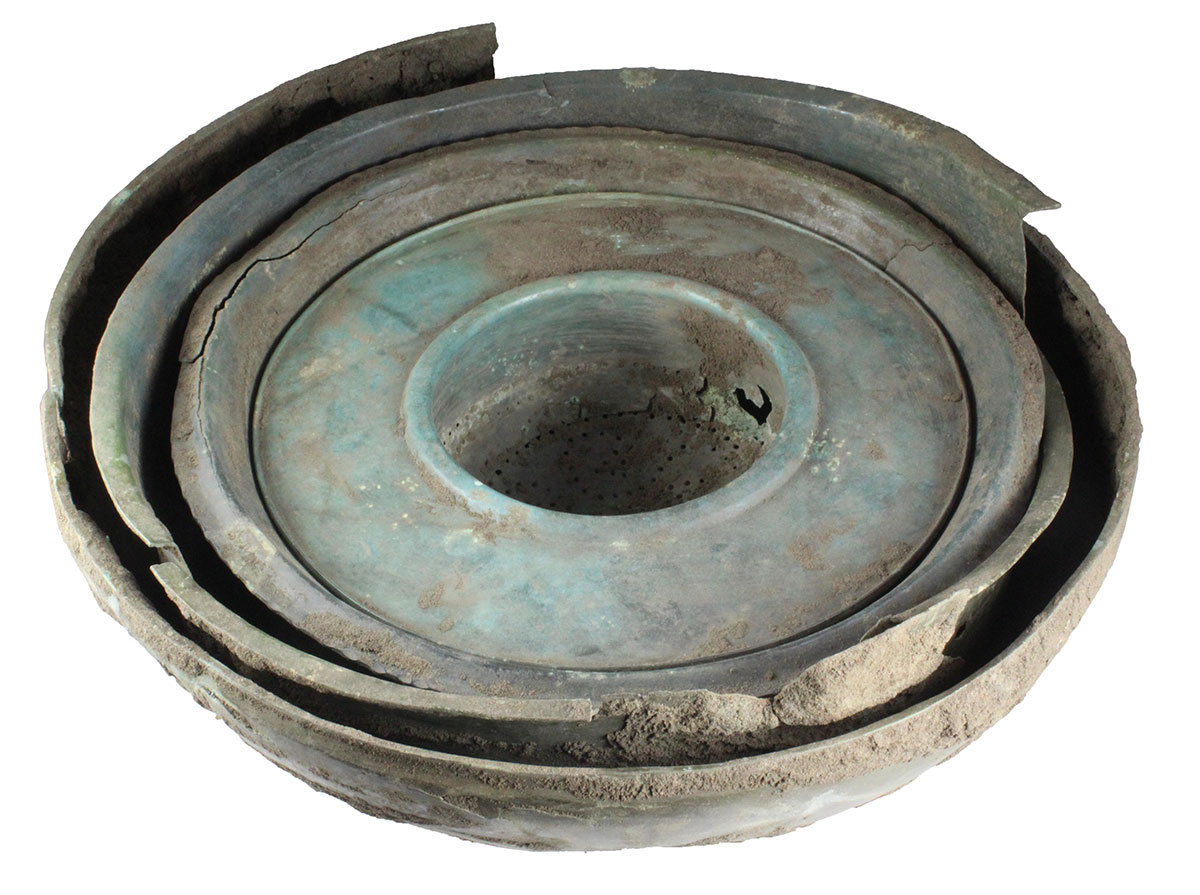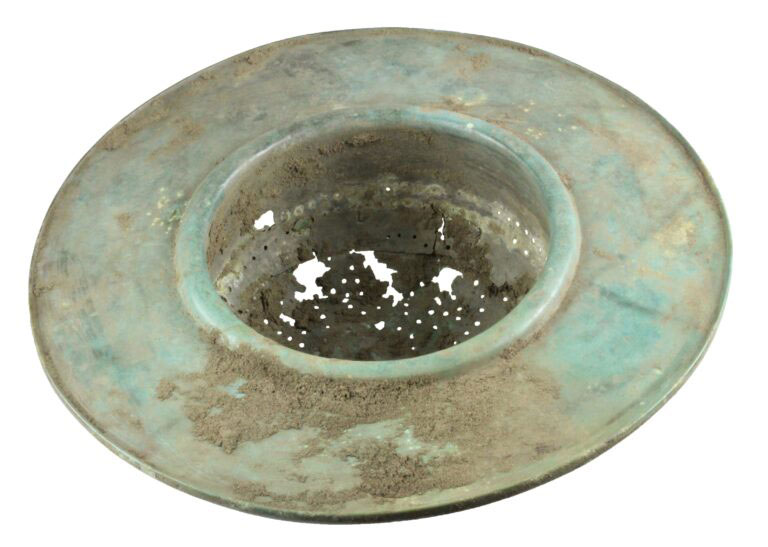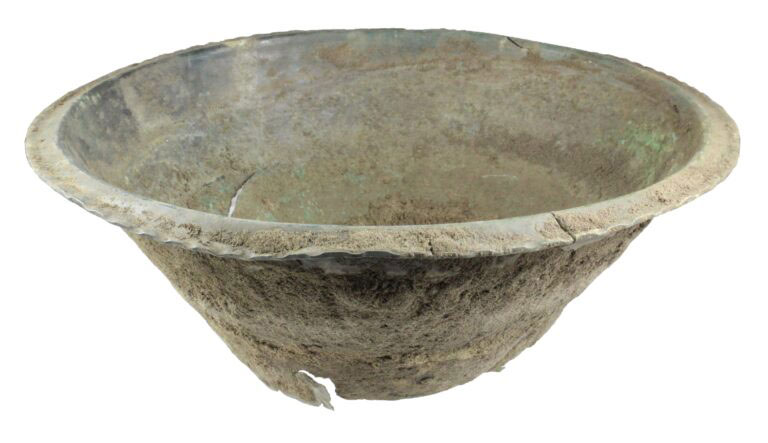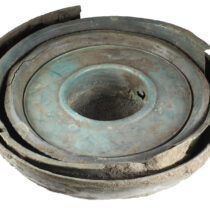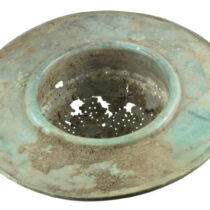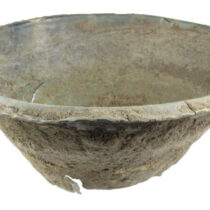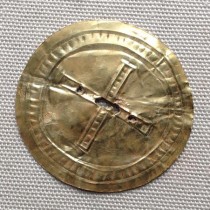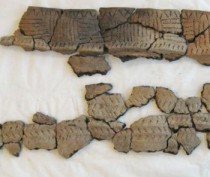The Wiltshire Museum has acquired an important hoard of four bronze vessels, probably buried at the end of Roman Britain, 1,600 years ago. They vessels were carefully nested inside each other, perhaps using heather, bracken and sedge grasses as ‘bubblewrap’.
They are so fragile they can only be removed from their packing by an experienced conservators are are now being conserved for display in the Museum, thanks to the support of over 40 people who donated to the museum’s appeal in April 2023.
Although buried at the same time, the vessels are of different dates. The largest vessel is a bronze bowl that was made in around 350 AD, so the hoard must have been hidden after this date. The smallest is a wine strainer, which was over 200 years old when buried. The other two bronze bowls were also heirlooms, one of them being over 100 years old.
Lisa Brown, Curator at Wiltshire Museum, has found that the bronze vessels are fragile, and urgently needed conservation and cleaning to remove dried on soil and to prepare them for display. Conservation experts, Drakon Heritage and Conservation, have been selected undertake this incredibly delicate task, after which they will be displayed in the Museum, showing how they were deposited in the ground 1,600 years ago.
The hoard was found by Paul Hart, using a metal detector, and promptly reported to the Wiltshire Finds Liaison Officer. The finder and landowner generously agreed to donate the vessels to the Wiltshire Museum.
For details about the find please see: https://finds.org.uk/database/artefacts/record/id/890951
